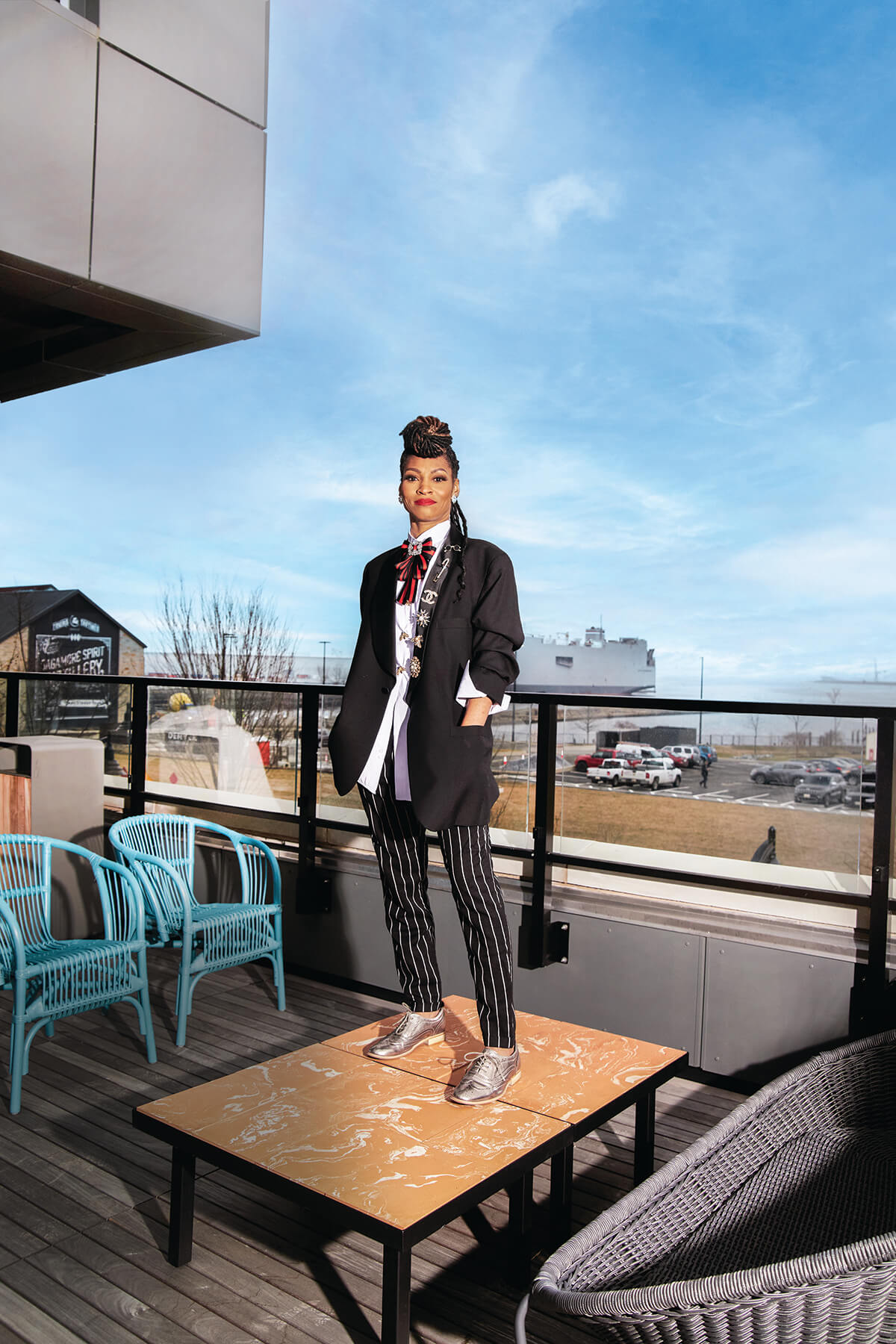GameChangers
Chenire Carter is Bridging the Gaps Between Baltimore Peninsula and Surrounding Communities
As MAG Partners’ director of community and experiences, the Cherry Hill native works to ensure that the South Baltimore urban revitalization provides opportunities for all.

You can tell a lot about someone from their laugh. And Chenire Carter delivers a warmhearted infectious roar.
Born and raised in Cherry Hill, the Maryland Institute College of Art alum has worked in her hometown for more than 20 years, through community-centric roles at such places as St. Vincent de Paul, Paul’s Place, and Baltimore City Public Schools. Now at MAG Partners—the lead developer behind the up-and-coming neighborhood rebrand of Port Covington known as Baltimore Peninsula—her focus is on bridging the gap with the surrounding communities.
As Baltimore Peninsula is one of the largest urban revitalization efforts in the United States, with the goal of transforming a former industrial port in an area of historic disinvestment into a vibrant new neighborhood in South Baltimore, hers is a vital role.
We spoke to Carter about the opportunities that the project presents—and its challenges.
What brought you to the Baltimore Peninsula project?
Five generations of my family have lived in Cherry Hill, so when I first heard about the project, I was curious and admittedly apprehensive. When I realized the Baltimore Peninsula wasn’t going to displace existing South Baltimore residents, I saw the potential to channel my love of our city into helping shape a game-changing development.
What work are you doing with the community?
We’re focused on creating increased access to opportunities, because while talent is widespread in Baltimore, opportunity is not. The neighborhoods we work with are often classified as “underserved” or “underprivileged,” but really, I think they’re underestimated—and this is because they historically have not had access to the types of resources that a project like Baltimore Peninsula has.
Through our role in the SB7 Coalition—a unique co-joining of developer and South Baltimore community leaders—we’re working to thoughtfully and intentionally invest in the local communities, whether through funding allocated to the surrounding South Baltimore neighborhoods, technical assistance for local businesses, or partnerships with community organizations that have long been doing meaningful work in our city.
How are you and the development team working to abate concerns?
We take all concerns seriously; we can’t improve without knowing what we should improve on. In my role, I am in constant communication with local residents and community leaders. The number one concern has been, “Is the Baltimore Peninsula for us?” which often speaks to various disparities that many have experienced in their lifetime. Understandably, the community wants to know that the project is truly “for them,” and we’ve made sure this is the case by providing those critical opportunities for success to Baltimoreans first and foremost.
We prioritize our minority-women-owned business contracts and local hiring efforts, and we’re proud to partner with individuals like restaurateur Pinky Cole, who knows the city on a deeper level, and who will be opening two restaurants—Slutty Vegan and Bar Vegan—in the neighborhood later this year.